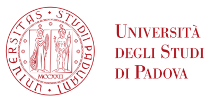by prof. Marco Cambiaghi, Dep. of Neurosciences, Biomedicine and Movement Sciences – University of Verona
When: March 10th, 2022 – 3:00 pm
Where: Zoom meeting. Recording available on Mediaspace
Abstract: Transcranial direct current stimulation (tDCS) is a widely adopted non-invasive brain stimulation technique for the modulation of brain excitability. The direct neuromodulatory effects of tDCS beneath the electrode is considered to extend to nearby as well as distant brain areas, mainly depending on the activation state of the brain before and during stimulation. This is evident in physiological circumstances (e.g. during physical activity) but it is even more marked in pathological conditions (i.e. stroke).
My recent activity focuses on the study of tDCS aftereffects on direct and indirect modulation in the primary motor cortical area in mice while performing a motor task. We observed that unilateral stimulation is able to influence neural activity and plasticity in the contralateral hemisphere if applied during a simple motor task that activates motor areas bilaterally. This results could be of great relevance for the use of such technique in the chronic phase after brain ischemia. Moreover, in the photothrombotic mouse model of ischemia, the application of cathodal tDCS few hours after the stroke onset was observed to improve functional recovery and act on non-neural cells, by modulating microglia morphology.

